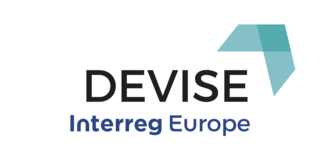DEVISE’s virtual trip to explore project’s additional activities, that will contribute to the improvement of the policy instruments addressed by the partners, continues in the region of South Ostrobothnia (Finland), where project partners from Seinäjoki University of Applied Sciences tell us more about the findings and results of the recently concluded COVID-19 Regional Context Assessment in relation to digital transformation of targeted SMEs and some successful COVID-19 good practices identified.
Our partner Ari Sivula, Research and Development Manager, Principal Lecturer and Adjunct Professor at SEAMK, explains that they have identified and utilized several sources (public sources and SMEs) for the COVID-19 Regional Context Assessment. According to him, the pandemic has had negative and positive impact to companies acting at the South Ostrobothnia region. SEAMK has addressed several sectors, however, the manufacturing industries were highlighted among them. “Conclusions can be drawn based on the sources utilized”, states Ari. According to him, regional and national authorities have supported companies in several ways, such as regional funds that have provided new opportunities for the enterprises. In addition, new technologies have been adapted in SMEs (XR, robotics, artificial intelligence, digital twins and simulation). “Companies are now more aware of possibilities of different technologies although the maturity level is different in SMEs”, he adds. Finding a new workforce seems to be still a challenge.
Ari highlights that the impact of COVID-19 was smaller than what was expected in most of the industries. Nonetheless, it directly negatively impacted to the services provided and also, when it came to getting the raw materials and components, that became a challenge for SMEs. In this scenario, our DEVISE partner sees some possibilities for supportive policy instruments. Existing strategies support the development well in the region, but he points out that there are chances of action in common and general digitalization themes, demonstrators, company resilience, digital innovations and in continuous education.
Collaborative VR/XR solutions in South Ostrobothnia
Utilizing virtual technology in the presentation of machines and devices brings some new possibilities. DEVISE partner Juha Palomäki, Technology Agent at SEAMK, explains that this technology can be used at a fair, for example, in which case the actual machine/device does not have to be transferred to the venue and the presentation is handled in a virtual way. According to Juha, there are many benefits when taking advantage of virtual technology: “this allows the presentation of several devices at the fair with a lightweight organization, the use of the system reduces the carbon footprint because the freight arrangements for the machines are left out and, also, introducing machines and equipment into the Collaborative VR enables presentations, training and testing in an interactive manner, bringing the functionality of the devices and the correct device size to display”.
Photo caption: “The picture shows an example of the model we made, the device is a welding jig where the piece can be raised and rotated to be welded either by robot or manually. The user has virtual glasses and he can move the functions of the machine using the device virtually from the control panel by hand controls”, explains Juha while sharing a real and successful example to the DEVISE partnership.











